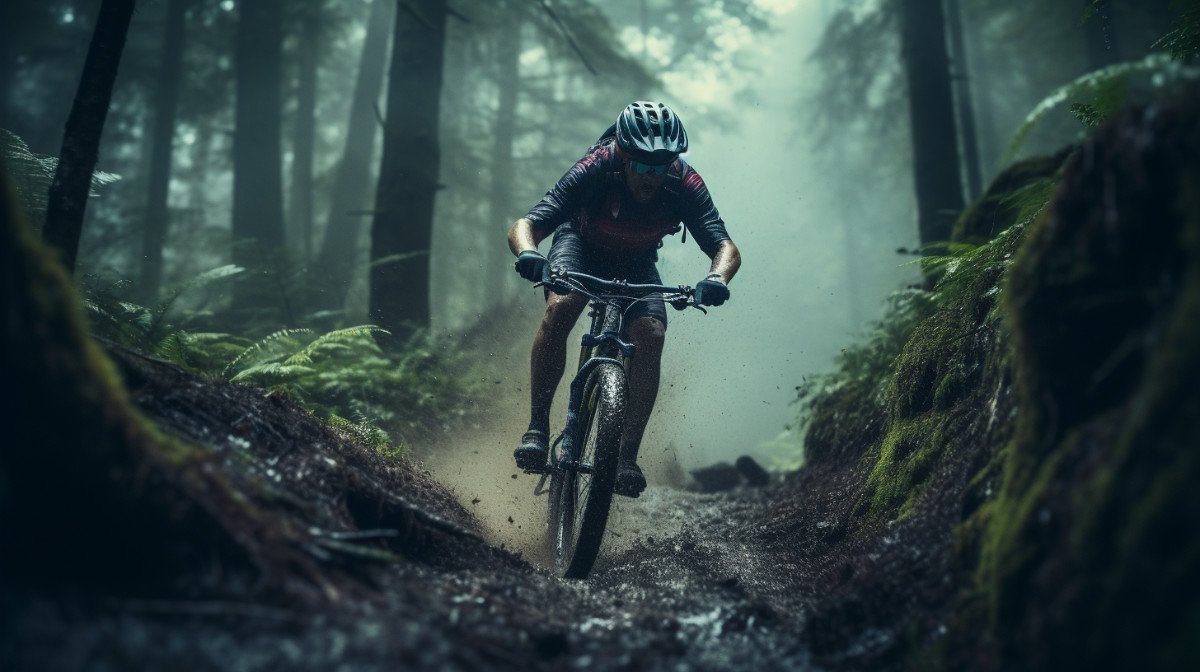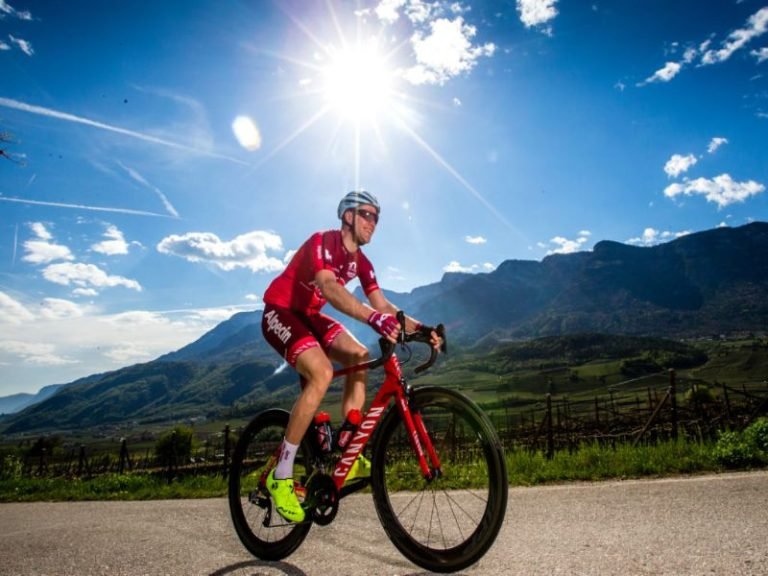Does Biking Build Calves?
Are you wondering if biking can help you build stronger and bigger calves? It’s a common question among cyclists and fitness enthusiasts alike. In this article, we’ll explore the relationship between biking and calf muscle development, and whether cycling alone is enough to give you those enviable calf muscles.
Does Biking Build Calves? – Key Takeaways:
- Biking primarily works the quads and glutes, with the calves playing a supporting role in the pedal stroke.
- While biking can contribute to some calf muscle development, weight training exercises are more effective for building calf muscles.
- Genetics, weight training, and overall body fat percentage also play a significant role in calf size and appearance.
- Cycling can help improve calf tone and definition, but may not result in significant calf muscle growth.
- For optimal calf muscle development, consider incorporating targeted weight training exercises in combination with cycling.
What Role Do Calves Play in Cycling?
When it comes to cycling, the calves play an important role in the overall pedal stroke. While the quads and glutes are the primary muscles responsible for generating force on the pedals, the calves work in conjunction with these muscles to provide stability and aid in power production. The calves are activated during approximately half of the pedal rotation, helping to push the pedals downwards and maintaining a stable foot position.
“The calves work as synergists during cycling, assisting the quads and glutes in generating force,” explains Dr. Lisa Johnson, a sports biomechanist. “They help to control the movement of the foot and contribute to a smooth and efficient pedal stroke.”
While the calves may not be the main drivers of power in cycling, their activation and engagement are crucial for maintaining proper form and preventing excessive strain on other muscles. Cyclists who “ankle,” or push through with their forefoot, may feel increased calf activation during their rides. This technique can provide an extra boost of power and leverage, especially when climbing or sprinting.
Overall, while the calves may not be the star players in cycling, their contribution to stability and power cannot be overlooked. By working in conjunction with the quads and glutes, the calves help ensure a balanced and efficient pedal stroke, contributing to an enjoyable and effective cycling experience.
| Muscles Used in Cycling | Primary Role |
|---|---|
| Quadriceps (quads) | Generate force on the downstroke |
| Gluteus Maximus (glutes) | Generate force on the downstroke and contribute to hip extension |
| Calves | Aid in power production, provide stability, and push pedals downwards |
Importance of Calves in Pedal Stroke
While the quads and glutes are primarily responsible for producing force on the pedals, the calves play a crucial role in maintaining stability and facilitating smooth movement. Their activation during the pedal stroke helps to stabilize the foot and ankle joint, preventing unwanted movement and maintaining an efficient transfer of power from the legs to the bike.
In addition to their role in stability, the calves also contribute to pushing the pedals downwards, especially during the second half of the pedal rotation. This downward force aids in maintaining momentum and propelling the bike forward. Without the activation of the calves, the pedal stroke would be incomplete and less efficient.
Understanding the role of the calves in cycling can help cyclists better optimize their pedal stroke and improve their overall performance. By focusing on proper form and engaging the calf muscles, cyclists can enhance their power output and reduce the risk of muscle imbalances or injuries.
Does Cycling Build Calf Muscles?
When it comes to calf muscle development, many people wonder if cycling can help build bigger and stronger calves. While cycling can certainly contribute to calf muscle toning and strength, its ability to significantly increase calf size is limited.
Cycling is a low-impact exercise that primarily targets the quadriceps and glutes, with the calf muscles playing a supporting role. The repetitive motion of cycling helps activate and work the calf muscles, leading to some muscle growth. However, the resistance provided by cycling is not sufficient for optimal muscle development. To truly build calf muscles, incorporating weight training exercises that specifically target the calves is recommended.
Table: Comparison of Cycling and Weight Training for Calf Muscle Development
| Cycling | Weight Training | |
|---|---|---|
| Resistance | Low | High |
| Muscle Activation | Partial | Full |
| Muscle Growth | Limited | Optimal |
Note: The table above summarizes the key differences between cycling and weight training for calf muscle development.
In addition to cycling, other cardio exercises like jogging, step aerobics, hiking, and stair climbing can also engage and strengthen the calf muscles. These exercises provide a higher level of resistance and can contribute to muscle growth in the calves. Furthermore, losing excess body fat through a combination of cycling and a healthy diet can improve the overall appearance of the calves, enhancing their tone and definition.
The Benefits of Biking for Calf Strength
While cycling may not directly result in significant calf muscle growth, it offers several other benefits for calf strength. Regular cycling helps improve the endurance and stamina of the calf muscles, making them more resistant to fatigue during physical activities. Cycling also promotes better blood circulation throughout the lower legs, which can enhance overall lower limb strength and reduce the risk of vascular-related conditions.
Moreover, cycling is a low-impact exercise that puts minimal stress on the joints, including the ankles and knees. This makes it an excellent option for individuals with joint issues or those recovering from injuries. By incorporating cycling into your fitness routine, you can strengthen your calves, improve cardiovascular health, and enjoy the many joys of biking.
Other Factors That Affect Calf Size
When it comes to calf size, genetics play a significant role. Some individuals are naturally blessed with larger or more defined calves, while others may struggle to develop them despite their efforts. While cycling can contribute to toning and improving the appearance of the calves, weight training exercises specifically targeting the calf muscles are more effective for muscle growth.
In addition to cycling and weight training, other cardio exercises can also engage and strengthen the calf muscles. Jogging, step aerobics, hiking, and stair climbing are all great options to incorporate into your fitness routine. These exercises provide additional resistance and impact on the calves, helping to improve their strength and overall development.
Furthermore, it’s worth noting that weight loss can also impact the appearance of your calves. When you lose excess body fat, your calves may become more defined and toned. By combining a balanced diet with regular cycling and other forms of exercise, you can work towards achieving your desired calf appearance.
The Importance of Weight Training for Calf Growth
If you’re looking to build larger calf muscles, weight training exercises should be a key component of your workout routine. While cycling can contribute to some muscle development, the resistance provided by weight training is far greater and more suitable for optimal calf growth. Calf raises and seated calf raises are two effective exercises that specifically target the calf muscles.
| Exercise | Description |
|---|---|
| Calf Raises | Stand with your feet hip-width apart and lift your body onto the balls of your feet. Slowly lower back down and repeat. |
| Seated Calf Raises | Sit on a bench with your knees bent and place a weight across your thighs. Lift your heels off the ground, then slowly lower them back down. |
By incorporating these weight training exercises into your fitness routine, you can target and stimulate the calf muscles to promote growth and development.
Conclusion
While biking is a great way to tone and strengthen your calves, it may not lead to significant muscle growth. The calves primarily act as stabilizers and support the pedal stroke, with the quads and glutes taking the lead in force production. To truly build calf muscles, incorporating weight training exercises that specifically target the calves is recommended.
However, don’t discount the benefits of cycling. It can still contribute to overall leg muscle development and improve the appearance of your calves by increasing tone and definition. Biking for toned calves is definitely achievable, especially when combined with other exercises.
If you’re looking for the best exercises to build calves with biking, consider incorporating interval training and hill climbs into your cycling routine. These types of workouts increase the resistance and intensity, putting more demand on the calves and helping to stimulate muscle growth.
Remember, calf development through cycling may not be as significant as through weight training, but it can still provide aesthetic improvements and overall leg strength. So keep pedaling, enjoy the ride, and embrace the benefits that biking brings to your calves and overall fitness.
FAQ
Does biking build calves?
Biking can contribute to muscle development and toning in the calves, but weight training is considered the best option for building calf muscles.
What role do calves play in cycling?
Calves primarily act as stabilizers and assist in the pedal stroke, working in conjunction with the quads and glutes.
Does cycling build calf muscles?
Cycling can contribute to calf muscle development and toning, but the extent to which it can make the calves bigger is limited.
What other factors affect calf size?
Genetics play a significant role in calf size, and weight training exercises specifically targeting the calf muscles are more effective for muscle growth.
What is the conclusion?
While cycling can help tone and strengthen the calves, weight training exercises are recommended for optimal calf muscle development.







